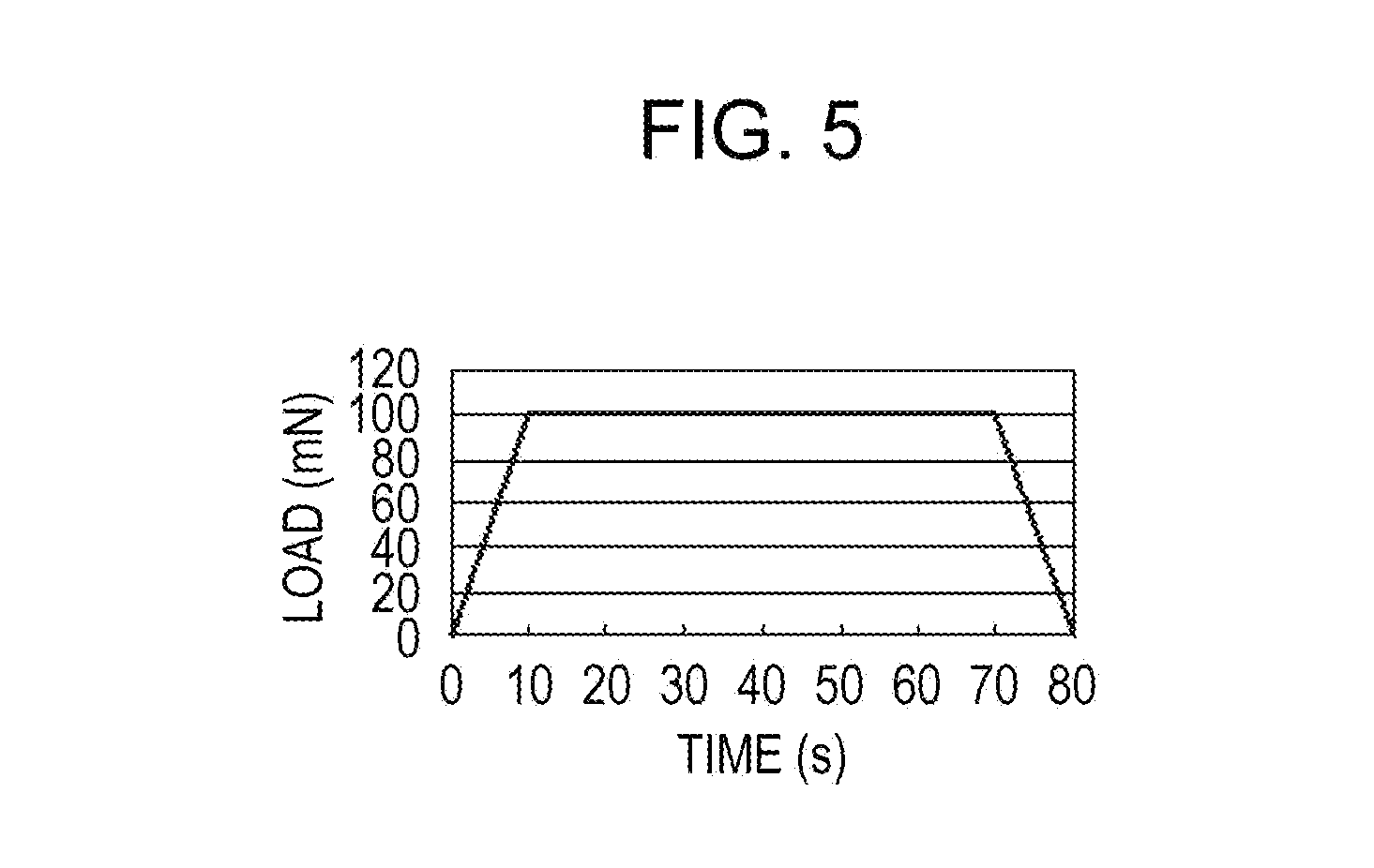Ultraviolet curable composition for optical disc and optical disc
- Summary
- Abstract
- Description
- Claims
- Application Information
AI Technical Summary
Benefits of technology
Problems solved by technology
Method used
Image
Examples
embodiments
[0110]Hereinafter, as specific examples of an optical disc according to the present invention, examples of specific configurations of a monolayer-type optical disc and a bilayer-type optical disc will be described.
[0111]As a preferred embodiment of a monolayer-type optical disc among optical discs according to the present invention, for example, a configuration illustrated in FIG. 1 can be exemplified in which a light reflecting layer 2 and a light transmitting layer 3 are stacked on a substrate 1, and a blue laser beam is made incident from the light transmitting layer side to record or reproduce information. The irregularities in the figure schematically represent a recording track (groove). The light transmitting layer 3 is constituted by a cured product of an ultraviolet curable composition according to the present invention and has a thickness of 100±10 μm. The substrate 1 has a thickness of about 1.1 mm. The light reflecting film is a thin film composed of silver or the like.
[...
synthetic example 1
[0121]In a flask equipped with a thermometer, a stirrer, and a reflux condenser, 230 g of caprolactone-modified β-hydroxyethyl acrylate (hydroxyl value=244 mg / KOH, PLACCEL FA1-DDM, manufactured by DAICEL CHEMICAL INDUSTRIES, LTD.), 148 g of phthalic anhydride, and 0.1 g of hydroquinone serving as a polymerization inhibitor were placed; and the temperature of the resultant mixture was increased to 120° C. over 2 hours under stirring. The mixture was maintained at 120° C. for 10 hours. It was then confirmed that the mixture had an acid value of 148 mg / KOH and the temperature of the mixture was subsequently decreased so 80° C. The mixture was mixed with 189 g of a bisphenol A epoxy resin and 2.85 g of triphenyl phosphine. The temperature of the mixture was increased back to 120° C. and the mixture was then maintained for 4 hours to provide a reaction mixture that was a transparent pale-yellow resin-like mixture (acid value=0.7, butyl acetate-diluted viscosity (reaction mixture / butyl ac...
synthetic example 2
[0122]To a reaction vessel equipped with a stirrer, a rectifying column, a water separator, a condenser, a thermometer, and a nitrogen inlet tube, 91 parts of ethylene glycol and 318 parts of adipic acid were added and the temperature of the resultant mixture was increased to 140° C. over an hour under stirring. The temperature was further increased to 230° C. over 3 hours and the resultant mixture was allowed to react for 3 hours at 230° C. The resultant solution was cooled when the acid value was 221 KOHmg / g. After the solution was cooled to 100° C., the solution was mixed with 529 parts of EPICLON850 (bisphenol A epoxy resin, manufactured by Dainippon Ink and Chemicals, weight per epoxy equivalent: 188 g / eq) and 0.2 parts of triphenyl phosphine, and the resultant mixture was allowed to react at 120° C. for 4 hours. The acid value was 7.5 KOHmq / g. Under air flow without the nitrogen inlet tube, the resultant solution was mixed with 99 parts of acrylic acid (98%), 0.5 parts of hydr...
PUM
| Property | Measurement | Unit |
|---|---|---|
| Temperature | aaaaa | aaaaa |
| Temperature | aaaaa | aaaaa |
| Temperature | aaaaa | aaaaa |
Abstract
Description
Claims
Application Information
 Login to View More
Login to View More - R&D
- Intellectual Property
- Life Sciences
- Materials
- Tech Scout
- Unparalleled Data Quality
- Higher Quality Content
- 60% Fewer Hallucinations
Browse by: Latest US Patents, China's latest patents, Technical Efficacy Thesaurus, Application Domain, Technology Topic, Popular Technical Reports.
© 2025 PatSnap. All rights reserved.Legal|Privacy policy|Modern Slavery Act Transparency Statement|Sitemap|About US| Contact US: help@patsnap.com



